Refer to the exhibit. The main flow contains an HTTP Request in the middle of the flow. The HTTP Listeners and HTTP request use default configurations.
What values are accessible to the Logger at the end of the flow after a web client submit request to ?
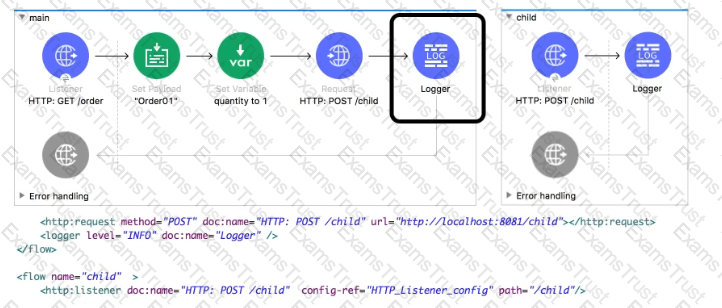
A Mule application contains an ActiveMQ JMS dependency. The Mule application was developed in Anypoint Studio and runs successfully in Anypoint Studio.
The Mule application must now be exported from Anypoint Studio and shared with another developer.
What export options create the smallest JAR file that can be imported into the other developer's Anypoint Studio and run successfully?
A function named newProdCode needs to be defined that accepts two input parameters, an integer value for itemID and a string value for productCategory, and returns a new product code.
What is the correct DataWeave code to define the newProdCode function?
What is the minimum required configuration in a flow for a Mule application to compile?
A Mule application contains two HTTP Listeners, each configured for different API endpoints: and http: //acme .com/a pis/customers.
What base path value should be set in an HTT? Listener config element so that it can be used to configure both HTTP Listeners?
Refer to the exhibit.
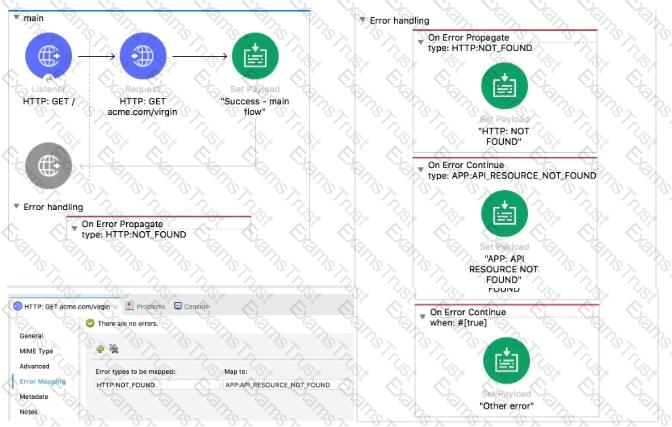

The main flow is configured with their error handlers. A web client submit a request to the HTTP Listener and the HTTP Request throws an HTTP:NOT_FOUND error.
What response message is returned?’’
What response message is returned?
An API specification is designed using RAML. What is the next step to create a REST Connector from this API specification?
Refer to the exhibits.
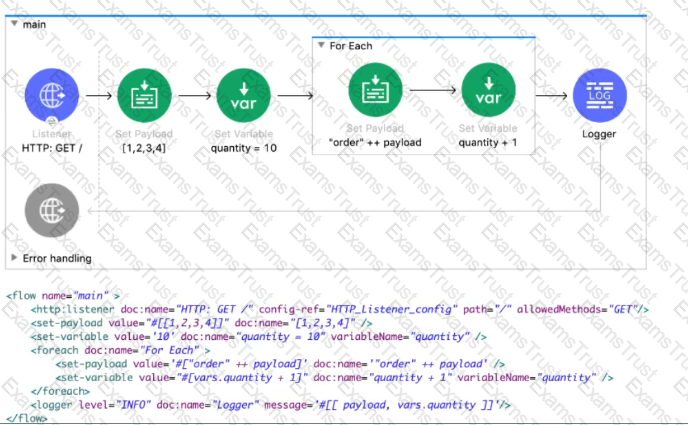
What payload and quantity are togged at the end of the main flow?
Refer to the exhibits.
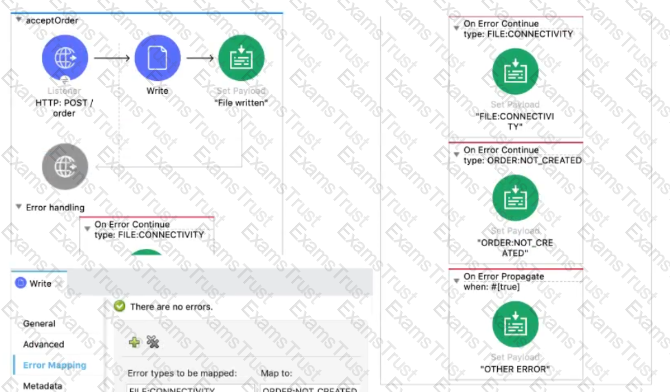

A web client sends a POST request with the payload {"oid": "1000", "itemid": "AC200", "qty": "4" } to the Mule application. The File Write operation throws a FILE:CONNECTIVITY error.
What response message is returned to the web client?
A Mule application contains a global error handler configured to catch any errors.
Where must the global error handler be specified so that the global error handler catches all errors from flows without their own error handlers?
Refer to the exhibits.
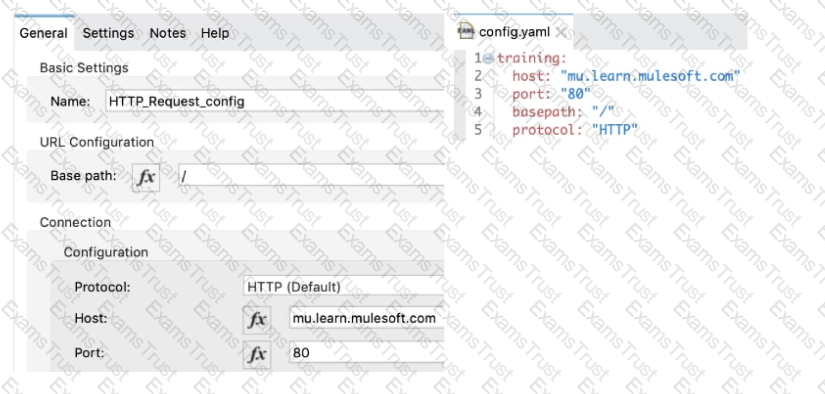
A Mule application has an HTTP Request that is configured with hardcoded values. To change this, the Mule application is configured to use a properties file named config.yaml.
what valid expression can the HTTP Request host value be set to so that it is no longer hardcoded?
Refer to the exhibits.
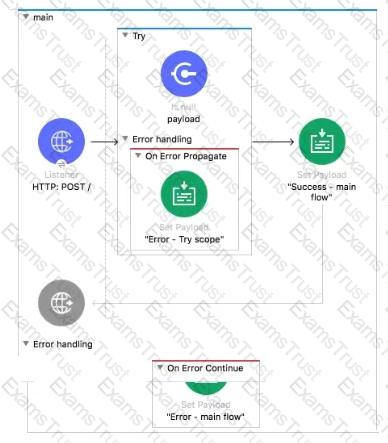
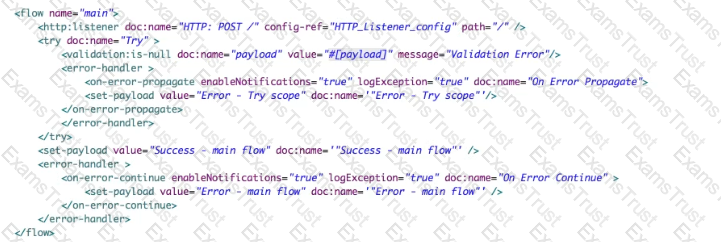
The Validation component in the Try scope throws an error.
What response message is returned to a client request to the main flow's HTTP Listener?
The Validation component in the Try scope throws an error. What response message is returned to a client request to the main flow's HTTP Listener?
Refer to the exhibits.
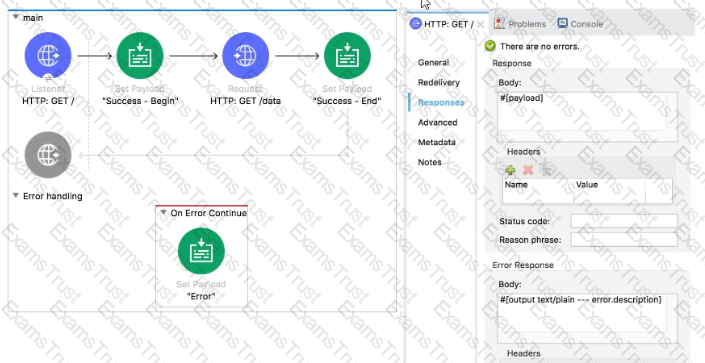

A web client submits a request to the HTTP Listener and the HTTP Request throws an error.
What payload and status code are returned to the web client?
Refer to the exhibits. A web client submits a request to the HTTP Listener and the HTTP Request throws an error.
What payload and status code are returned to the web client?
Refer to the exhibit.
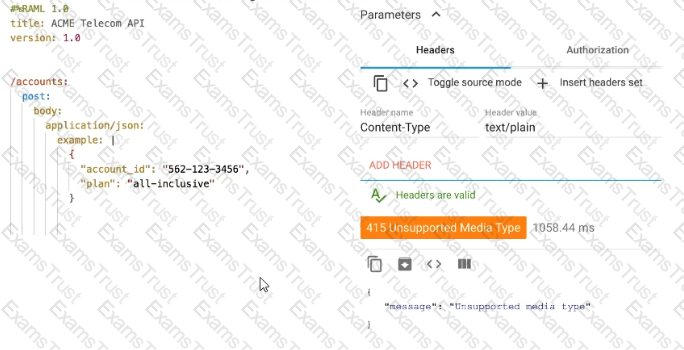
What should be changed to fix the 415 error?
According to MuleSoft. what is the first step to create a Modern API?